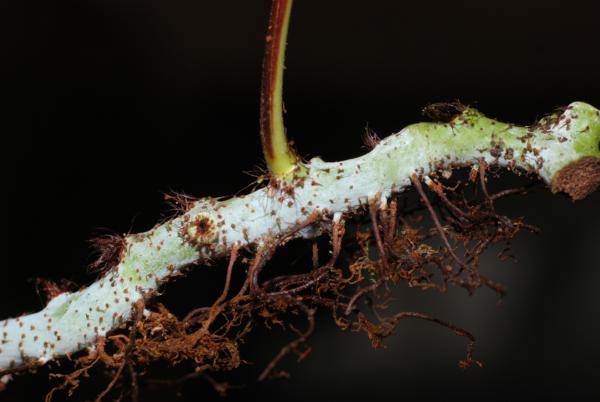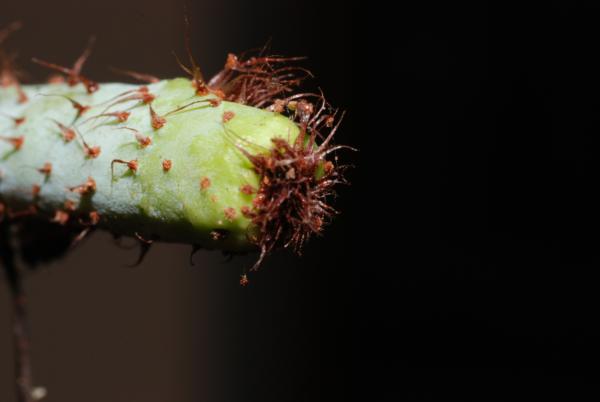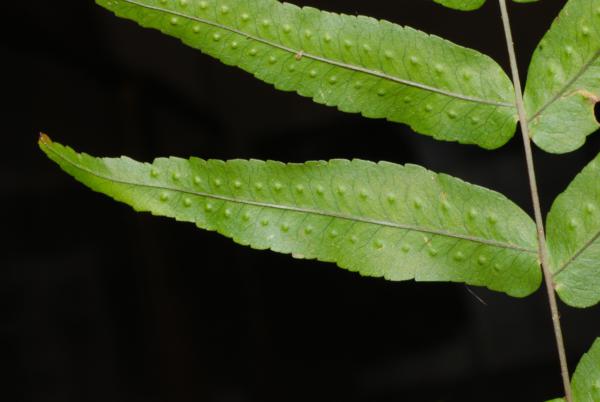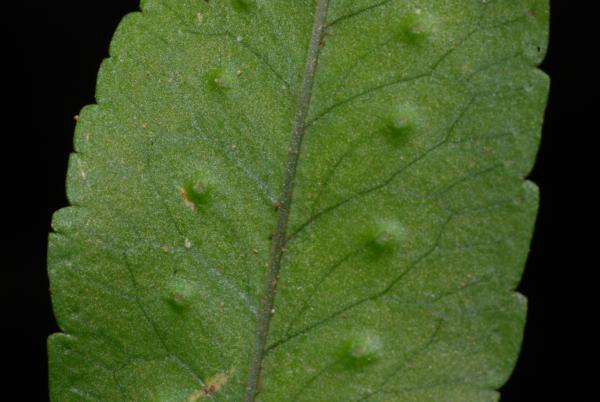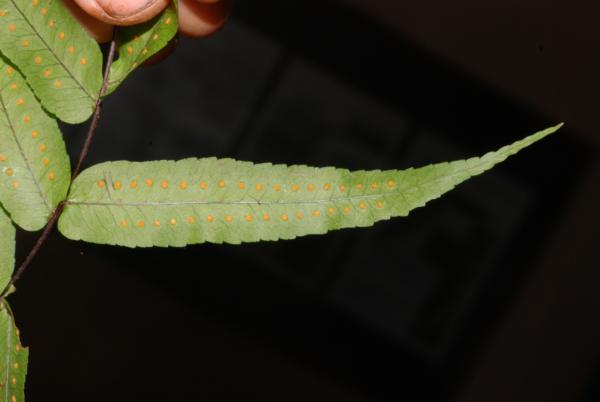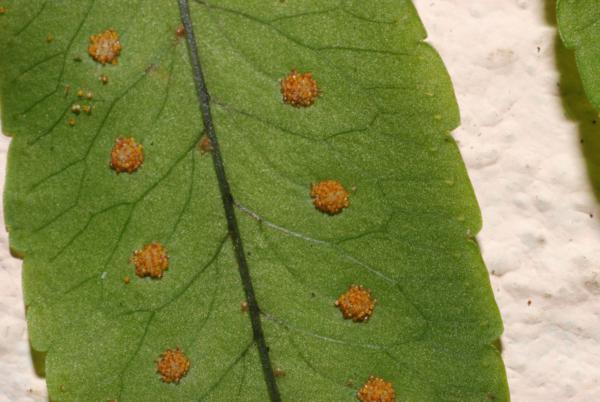
Goniophlebium subauriculatum (Blume) C.Presl
Family
Polypodiaceae
Nomenclature
Goniophlebium subauriculatum (Blume) C.Presl, Tent. Pterid.: 186. 1836; Bedd., Handb. Ferns Brit. India: 323, f. 173. 1883; Rödl-Linder, Blumea 34: 400. 1990; Hovenkamp & Rödl-Linder, Fl. Males., Ser. II, Ferns and Fern Allies 3: 51. 1998; Boonkerd & Pollawatn, Pterid. Thailand: 252, 271. 2000. – Polypodium subauriculatum Blume, Enum. Pl. Javae: 133. 1828; Blume, Fl. Javae Fil: 177, t. 68. 1828; Ching, Contr. Inst. Bot. Natl. Acad. Peiping 2: 51. 1933; Tardieu & C.Chr., Fl. Indo-Chine 7(2): 538. 1941; Holttum, Rev. Fl. Malaya ed. 1, 2: 207, f. 108. 1955 [‘1954’]; Holttum, Dansk Bot. Ark. 20: 21. 1961; Holttum, Dansk Bot. Ark 23: 232. 1965; Tagawa & K.Iwats., SouthE. Asian Stud. 5: 57. 1967; Tagawa & K.Iwats., Fl. Thailand 3: 573. 1989; Newman et al., Checkl. Vasc. Pl. Lao PDR: 30. 2007. – Type: Blume 130 (L), Java.
Goniophlebium molle Bedd., Ferns Brit. India: t. 206. 1867; Bedd., Handb. Ferns Brit. India: 322, f. 172. 1883; Ching, Contr. Inst. Bot. Natl. Acad. Peiping 2: 50. 1933; Tagawa & K.Iwats., SouthE. Asian Stud. 5: 57. 1967; Tagawa & K.Iwats., Fl. Thailand 3: 572. 1989; Boonkerd & Pollawatn, Pterid. Thailand: 271. 2000. – Polypodium beddomei Baker in Hook. et Baker, Syn. Fil. ed. 2: 344. 1874.
Description
Rhizome long creeping, 4–5(–10) mm diam., distinctly glaucous, densely scaly; scales basifixed to pseudopeltate, deltoid to linear, 3–8 by 0.7–1 mm, brown clathrate, toothed at margin. Stipes stramineous or brown, 15–25 cm long, densely scaly at base, minutely scaly upwards or glabrescent. Laminae imparipinnate, lanceolate, (20–)30–70(–250) by (7–)20–25(–50) cm, widest at the base to around the middle, rachis pale brown, minutely scaly throughout, lateral pinnae 25–35 pairs, a few basal pairs usually a little shorter than the next above, deflexed or patent, subopposite, sessile, linear, subcordate or subtruncate, roundly auricled on both sides at base, gradually narrowing from base to long attenuate apex, serrate at margin, patent or slightly ascending, straight or a little falcate, 8–20 cm by 7–18 mm, upper pinnae gradually becoming smaller; terminal pinna not so large, 3–10 cm long, irregularly lobed at basal portion; veins anastomosing to form 1–3 rows of areoles at each side of costa, more or less visible; herbaceous to subcoriaceous, deep green, glabrous or hairy on both surfaces. Sori terminal on simple included veinlets in costal areoles, in one row at each side of costa, costular, more than 1.5 mm diam., distinctly immersed and raised on the upper surface.
Distribution in Thailand
NORTHERN: Mae Hong Son, Chiang Mai, Chiang Rai, Lampang, Tak, Phitsanulok; NORTH-EASTERN: Phetchabun, Loei; SOUTH-WESTERN: Kanchanaburi; SOUTH-EASTERN: Prachin Buri, Chanthaburi.
Distribution in Laos
Champasak, [Peunongs].
Wider Distribution
NE india, SW China, Burma, Laos, Vietnam, throughout Malesia to Australia (Queensland).
Ecology
On tree trunks or on mossy rocks in light shade or at edge of evergreen forests at 700–1400 m alt. {CHECL LOWER ALT; ALSO HAD AS 500-1400 IN OTHER DOC}
Proposed IUCN Conservation Assessment
Least Concern (LC). This species is widespread and not under any known threat.
Voucher specimens - Thailand
Middleton et al. 5050, Chiang Mai, Doi Pha Hom Pok National Park (E).
Rhizome
Tip of rhizome
Upper surface of pinnae
Upper surface of pinna
Lower surface of pinna
Sori
Site hosted by the Royal Botanic Garden Edinburgh. Content managed by Stuart Lindsay, Gardens by the Bay, Singapore and David Middleton, Singapore Botanic Gardens. Last updated 24 January 2012
